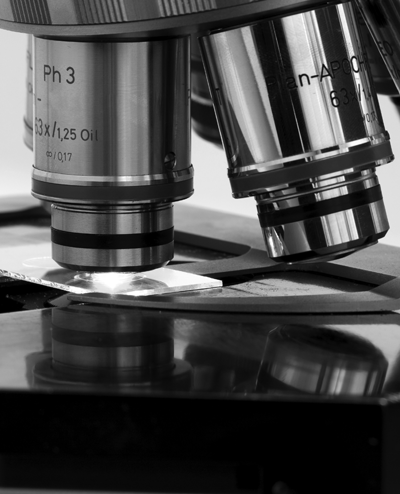Chapter 1.
Overview

What can we learn from a microscopic study of the cell structure and be havior of single-celled organisms?
That all living things are composed of cells is one of the most fundamental of all biological generalizations or principles. The two major cell types that exist, prokaryotic and eukaryotic, differ greatly. However, both carry out all of the functions of life. In this lab, you will review/learn some of the basics of microscopy in order to study these cell types in more detail.
- You will determine object orientation, field diameter, and resolution for both compound and dissecting microscopes.
- Using these tools and others, you will investigate the structure and behavior of prokaryotes and eukaryotes.
Among the questions you will address are:
- What structures of prokaryotes and eukaryotes are visible using a simple compound microscope? How do their sizes compare?
- What can you learn about the differences and similarities in the cells’ structure and behavior using direct observations?
- How does their behavior change when exposed to specific environmental conditions?
- To what stimuli do the different cells respond and how do they respond?
Before Coming to Lab
- Read Setting the Stage for Inquiry at the beginning of this lab manual and all of the lab titled “WHAT IS LIFE? What can we learn from a microscopic study of the cell structure and behavior of single-celled organisms?”
- Read all of the Reading Assignment for this lab (pp. 11–19).
- Answer the “Pre-Lab Questions” on this page. Do this in your lab notebook, recording the questions as well as your answers, so as to create as complete a record of your work and ideas as possible.
- Bring the following with you to lab:
- Lab manual
- Lab notebook
Pre-Lab Questions
How do magnification and resolution differ?
How do increases in magnification affect resolution? What, if anything, limits resolution? Explain.
How does the structure of a prokaryotic cell differ from that of a eukaryotic cell?
Calculate the maximum theoretical resolution of a dry objective with a numerical aperture (NA) of 1.0. Assume the illumination source is blue light for which lambda is 480 nm.
Use your knowledge of field diameter to calculate the diameter of a Paramecium that takes up 1/4 of the field diameter using the 40X objective. Assume that the field diameter of a 4X objective is 5.5 mm. Show all work to receive credit for your answer.
How fast (in mm/sec) is the Paramecium (in question 5) traveling if it moves across the full field diameter in 1.5 seconds? Convert your answer from mm/sec to km/hr. How does this speed compare to speeds you are more familiar with? Show all work to receive credit for your answer.
Activity Completed!
Activity results are being submitted...